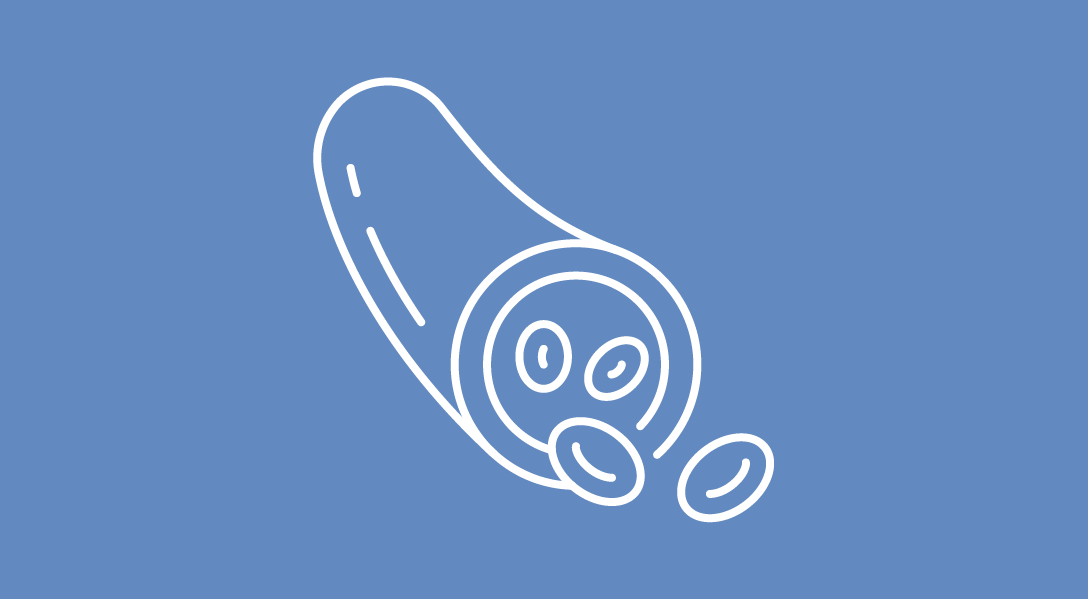Cranial Nerve Palsy May Be Present After Cilta-Cel for Multiple Myeloma
A subgroup of patients from the 3 CARTITUDE trials experienced cranial nerve palsy after treatment, most of whom were men.
Cranial Nerve Palsy May Be Present After Cilta-Cel for Multiple Myeloma

At a median of 3 weeks post-infusion, there was a subgroup of patients with multiple myeloma who were treated with ciltacabtagene autoleucel (cilta-cel; Carvykti) in the 3 different CARTITUDE trials experienced cranial nerve palsy (CNP), according to findings from a poster presentation from the 2024 Oncology Nursing Society Conference.1
Cases of CNP were experienced mostly in male patients and were low-grade, with most cases resolving after a short time on corticosteroid treatment. Additionally, those with cytokine release syndrome or immune effector-associated neurotoxicity syndrome (ICANS) were not found to be at a higher risk of having CNP.
This presentation assessed results from the phase 1/2 CARTITUDE-1 (NCT03548207), phase 2 CARTITUDE-2 cohorts A, B, and C (NCT04133636), and phase 3 CARTITUDE-4 studies (NCT04181827).2,3,4 CARTITUDE-1 (n = 97) included patients with relapsed/refractory multiple myeloma with 3 or more prior lines of therapy. In cohort A of CARTITUDE-2 (n = 20), patients with progressive multiple myeloma after 1 to 3 lines of prior therapy and who were refractory to lenalidomide (Revlimid) were included, cohort B (n = 19) included those with progressive multiple myeloma after early relapse, and cohort C (n = 20) included those with relapsed/refractory multiple myeloma. CARTITUDE-4 (n = 176) included patients with lenalidomide-refractory multiple myeloma and 1 to 3 prior lines of therapy.
To grade CNP adverse effects, the National Cancer Institute Common Terminology Criteria for Adverse Events version 5.0 was used. For patients with CNP, cerebral spinal fluid analyses and MRI were performed at the investigator’s discretion. Additionally, in order to assess CNP, flow cytometry was used for peripheral blood levels of cilta-cel and CAR-positive T cells with memory phenotypes. A multiplex sandwich immunoassay measured the serum cytokine levels.
Across the 3 studies, CNP was observed in 6.3% of patients. Most CNP events were grade 2 and presented as facial nerve palsy, and 3 patients had impairment of an additional cranial nerve.
Overall, 81% of patients with CNP were male. Prior to CNP, 1 patient experienced grade 2 ICANS, and no patients with CNP had movement and neurocognitive toxicity. Post–cilta-cel use and before CNP, 5 patients had bacterial infections, and 2 had cytomegalovirus.
In CARTITUDE-1, 3.1% of patients had CNP; for CARTITUDE-2 cohort A, it was 5.0%, cohort B was 5.3%, and cohort C was 0%; and in CARTITUDE-4, it was 9.1%. The median time to onset of CNP was 22 days (range, 1-101). Regarding the laterality of CNP, 71.4% had unilateral CNP, and 28.6% had bilateral CNP.
CNP at a maximum severity of grade 3 occurred in 33.3% of patients in CARTITUDE-1 and 12.5% in CARTITUDE-4. Cranial nerve VII involvement occurred in 100% of patients in each group except for cohort C, which was not evaluated. Cranial nerve involvement plus cranial nerve VII occurred in 33.3% of patients in CARTITUDE-1 and 12.5% in CARTITUDE-4. The amount of resolved CNP was 100% for CARTITUDE-1 and CARTITUDE-2 cohorts A and B as well as 87.5% for CARTITUDE-4.
For 17 patients who received an MRI and 14 with CSF analysis, there was no evidence of infections or malignant causes. Of note, 7 patients had facial nerve enhancement based on MRI. Corticosteroids were given to 19 patients for a median duration of 15 days. In 21 patients, 90.5% had a resolution of CNP with a median duration of 66 days.
For patients who received the total steroid dose of 250 mg or more vs 250 mg or less, there was no difference in CNP duration.
References
- Bennett L, Kruyswijk S, Sidana S, et al. Incidence and management of cranial nerve impairments in patients with multiple myeloma treated with ciltacabtagene autoleucel in CARTITUDE studies. Presented at the 49th Annual Oncology Nursing Society Conference; April 24-28, 2024; Washington, DC.
- Martin T, Usmani SZ, Beredeja JG, et al. Ciltacabtagene autoleucel, an anti–B-cell maturation antigen chimeric antigen receptor T-cell therapy, for relapsed/refractory multiple myeloma: CARTITUDE-1 2-year follow-up. J Clin Oncol. 2022;41(suppl 6). doi.10.1200/JCO.22.00842
- Hillengass J, Cohen AD, Agha M, et al. The phase 2 Cartitude-2 trial: updated efficacy and safety of ciltacabtagene autoleucel in patients with multiple myeloma and 1–3 prior lines of therapy (Cohort A) and with early relapse after first line treatment (Cohort B). ASTCT. 2024;30(suppl 2):S36-S37. doi.10.1016/j.jtct.2023.12.054
- San-Miguel J, Dhakal B, Yong K, et al. Cilta-cel or standard care in lenalidomide-refractory multiple myeloma. N Engl J Med. 2023;389(4):335-347. doi:10.1056/NEJMoa2303379
















